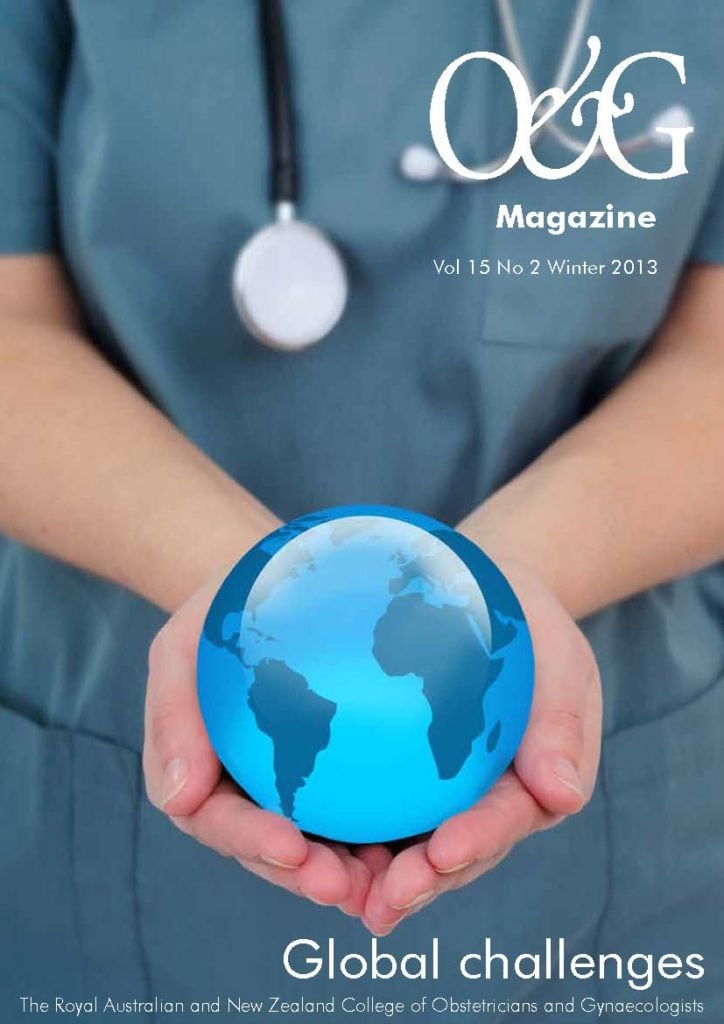Had time to read the latest journals? Catch up on some recent O and G research by reading these mini-reviews by Dr Brett Daniels.
Desvenlafaxine for menopausal symptoms
While hormone replacement therapy is effective in reducing the vasomotor symptoms associated with menopause, there are some women in whom oestrogen is contraindicated or who choose not to take it. For these women non-hormonal methods of symptom control are useful. These two recent papers, a meta-analysis and a 12-month follow-up of a randomised controlled trial (RCT) both report on the efficacy of the specific serotonin and noradrenaline reuptake inhibitor on reduction of hot flushes in menopausal women.
Sun et al.1 report a meta-analysis of six RCTs and concluded that desvenlafaxine at 100 or 150mg/day significantly reduced hot flushes at up to 12 months. There was no evidence of an increase in cardiovascular, cerebrovascular or hepatic toxicity associated with desvenlafaxine use. Pinkerton et al.2 report a 12-month follow-up of an RCT of desvenlafaxine 100mg/day. They report that significant decreases in hot flushes and self report measures of menopausal symptoms were all significantly improved in the desvenlafaxine group compared to placebo at three, six, nine and 12 months. It can reasonably be concluded that desvenalfaxine should have a place in the armoury of treatments for menopausal vasomotor symptoms, particularly in women for whom hormone replacement is contraindicated.
- Sun Z, Hao Y, Zhang M, 2013. Efficacy and safety of desvenlafaxine treatment for hot flashes associated with menopause: A meta-analysis of randomized controlled trials. Gynecol Obstet Invest, 75.
- Pinkerton JV, Archer DF, Guico-Pabia CJ, et al. 2013. Maintenance of the efficacy of desvenlafaxine in menopausal vasomotor symptoms: a 1-year randomized controlled trial. Menopause, Jan 20: 38-46.
Caesarean scar thickness and uterine rupture
The decision to attempt a trial of labour after a previous caesarean section (TOL) hinges on the balance between the likelihood of a successful vaginal delivery and the risks inherent in TOL. One such risk is that of uterine rupture, which can have catastrophic consequences for the mother and baby. The RANZCOG statement on TOL cites the risk of uterine rupture in TOL as about 6:1000 attempts. Prediction of the risk of uterine rupture prior to labour has been the subject of research with induction of labour, a short interpregnancy interval (<18 months) and more than one previous caesarean section all being associated with an increased risk of rupture.1
Ultrasound assessment of the thickness of the lower uterine segment is one method proposed to predict the risk of rupture in an individual pregnancy, with the rationale being that a thin caesarean scar is more likely to rupture than a thick one. A recent Swedish review by Valentin2, and an earlier review by Jastrow et al.3 both seek to examine the utility of this method. Jastrow’s analysis included 12 studies with 1834 women undergoing TOL after ultrasound measurement of the lower uterine segment. In the studies, 1121 cases of uterine scar defect were identified. There is debate on whether measurements should
be of the full uterine thickness or myometrial thickness only with both measurements being associated with risk of uterine scar defect.
For scar thickness to be a practical predictor of uterine scar rupture during TOL, protocols regarding measurement technique and cutoff values need to be defined. Unfortunately, both of these questions are not yet resolved. Jastrow et al. suggest the cutoff for full uterine thickness is between 2.0 and 3.5mm, while for myometrium only it is between 1.4 and 2.0mm. Valentin suggests the preferred measurement is the full uterine wall at 35–40 weeks, with a cutoff of 3.5mm as suggested by Rozenberg et al. in 1996.4
- RANZCOG. 2010. College Statement C-Obs-38. Planned vaginal birth after caesarean section.
- Valentin, L, 2013. Prediction of scar integrity and vaginal birth after caesarean delivery. Best Practice and Research Clinical Obstetrics and Gynaecology, 27: 285-295.
- Jastrow N, Chaillet N, Roberge S, et al., 2010. Sonographic lower uterine segment thickness and risk of uterine scar defect: A systematic review. JOGC, 3: 321-327.
- Rozenberg P, Goffinet F, Phillippe HJ, et al. 1996.Ultrasonographic measurement of the lower uterine segment to assess risk of defects of scarred uterus. Lancet, 347:281-284.
Advanced maternal age and pregnancy
Data from the Australian Institute of Health and Welfare reported that, in 2010, 23 per cent of mothers were 35 years old or over, compared with 17.5 per cent in 2001, while the percentage of mothers aged 40 and over increased from 2.9 per cent to 4.1 per cent1 over the same period. It still seems uncommon that institutional practices explicitly acknowledge the significance of the effect of advanced maternal age on pregnancy outcome.
The study by Kenny et al. analysed a cohort of 215 000 singleton births between 2004 and 2008 in the northwest of the UK.2 Of these women, 34 000 were aged between 35 and 39, while 7000 were aged 40 or over. Obstetric outcome measures obtained from a government obstetric database were compared between the 35–39 and >39 groups, compared to the group of women aged 20–29. Comparisons were adjusted statistically for parity, ethnicity, social deprivation score and body mass index.
Women in the groups both the 35–39 year and >39 year old age groups had an increased adjusted risk ratio for a number of adverse pregnancy outcomes compared to women aged 20–29. This includes an increased risk of large for gestational age babies, macrosomic babies >4.5kg, both emergency (>39 adjusted RR=1.63 (1.54-1.73) and elective (>39 adjusted RR=2.03 (1.93-2.13) caesarean sections, preterm (>39 adjusted RR=1.24 (1.13-1.37) and very preterm delivery (>39 adjusted RR=1.24 (1.01-1.53), and stillbirth (>39 adjusted RR=1.83 (1.37-2.43). There was not an increased relative risk of small for gestational age babies or neonatal death in the older age groups.
While this study has limitations in being based on hospital records and government data and in generalisability to an Australasian setting, it has the virtue of a large dataset and robust analysis. It should be noted that the risks reported by the authors are those after adjustment for parity and socioeconomic status. It is reasonable to expect that these findings should be incorporated into decisions regarding the obstetric care of women of advanced maternal age.
- Li Z, Zeki R, Hilder L et al. 2010. Australia’s mothers and babies 2010. Australian Institute of Health and Welfare.
- Kenny LC, Lavender T, MvNamee R, et al. 2013. Advanced maternal age and adverse pregnancy outcome: Evidence from a large contemporary cohort. PLOS ONE, 8 (2): 1-9.






Leave a Reply